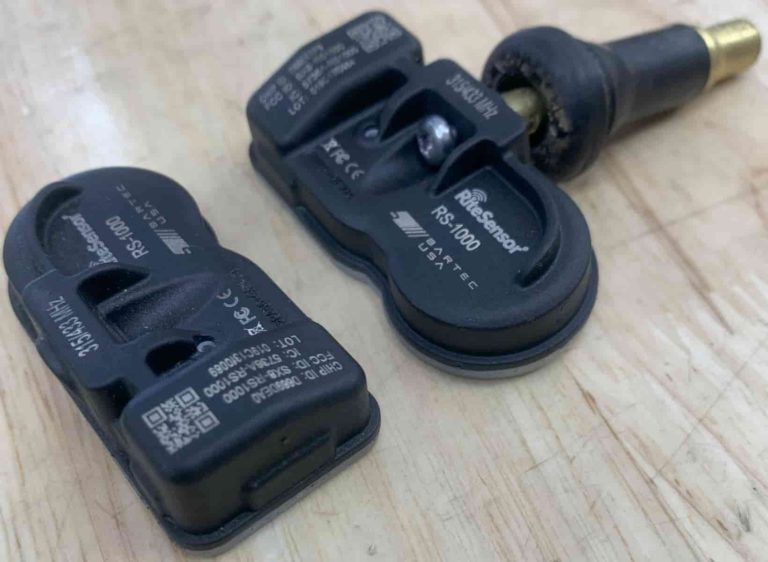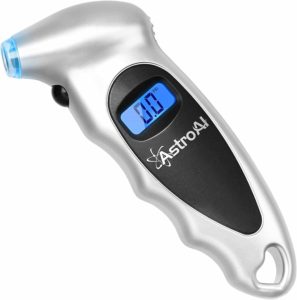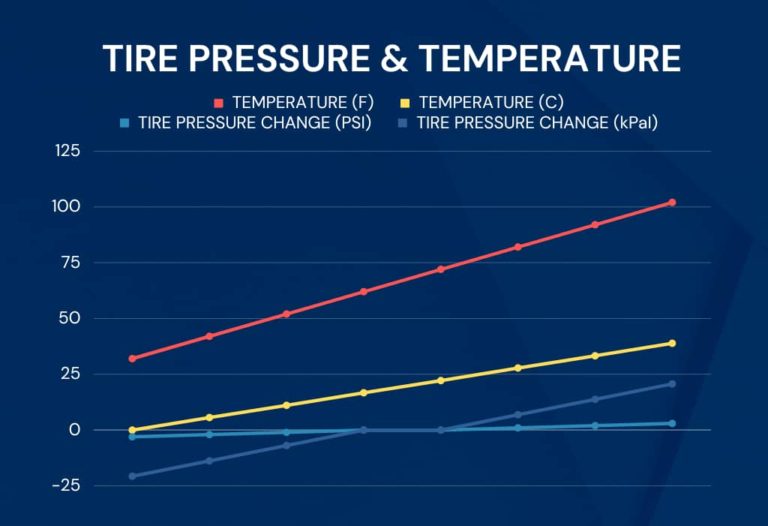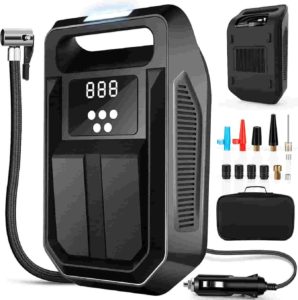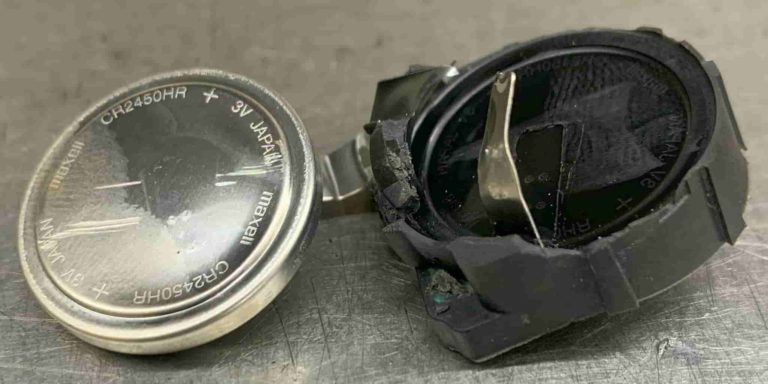The Importance of the Tire Pressure Monitoring System
Understanding the intricacies of your Lexus ES tire pressure monitoring system (TPMS) is key to ensuring its optimal performance, safety, and longevity. This deep dive explores the world of Lexus ES TPMS, a sophisticated system designed to alert drivers about significant changes in tire pressure. Learn about the structure, working, and maintenance of this high-tech system, and discover how you can optimize your car’s tire pressure, interpret warning signals, and troubleshoot issues. With this comprehensive guide, you’ll be well-equipped to keep your Lexus running smoothly and safely on the road.
How Does the Lexus ES TPMS Work?
The Lexus ES TPMS primarily functions based on wireless communication technology, semiconductor-based pressure sensors, and the vehicle’s on-board computer system.
The TPMS consists of several key components:
Pressure Sensors: Each wheel (including the spare on some models) contains a pressure sensor mounted on the inside of the tire’s valve stem. These sensors are essentially mini-computers powered by a small, self-contained battery. They continually measure the air pressure inside the tires and temperature, and may also include an accelerometer to determine when the car is moving. Each sensor has its own unique ID number.
RF Transmitter: The pressure sensor is connected to a radio frequency (RF) transmitter. When the tire pressure falls below or rises above the recommended level set by Lexus, or there’s a significant change in temperature which may affect pressure, the sensor sends a signal to the TPMS receiver via the RF transmitter.
TPMS Receiver: This is part of the vehicle’s electronic control unit (ECU). The receiver captures the signal sent by the transmitter, processes the information, and if the pressure is found to be too low or high, it communicates this information to the car’s driver through the dashboard warning indicator. The receiver knows which tire is sending the information based on the sensor’s unique ID number.
Dashboard Warning Indicator: It’s the visual alert system to inform the driver. If there’s a problem with the tire pressure, the TPMS warning symbol (a horseshoe-shaped icon with an exclamation mark in the middle) lights up on the car dashboard.
TPMS Reset Button: Lexus vehicles have a TPMS reset button, which allows the driver to reset the monitoring system after the tires have been inflated, rotated, or replaced.
The Lexus ES TPMS system works in real-time, providing accurate and timely data to the driver. When the vehicle is moving and a significant loss or gain of tire pressure is detected, the system is designed to alert the driver within a few minutes. This helps maintain optimal tire pressure, leading to increased vehicle safety, improved fuel efficiency, and extended tire life.
Remember, the TPMS isn’t a substitute for regular tire maintenance. It’s still extremely important to manually check your tires’ pressure at regular intervals and before long trips, to ensure the system is working properly and the tires are correctly inflated.
Understanding Tire Pressure
How to Check Tire Pressure
Make sure the tires are cold. If your vehicle has been driven, wait at least three hours before checking the tire pressure.
Remove the valve cap from the tire.
Press the tip of the tire pressure gauge onto the valve and read the pressure.
If the tire pressure is below the recommended level, fill the tire with air until the recommended Psi is reached. If the tire pressure is above the recommended pressure, release air until it’s correct.(Press the metal stem in the center of the tire valve to let air out. You can use any object like a screwdriver to do this. Be gentle.)
After adjusting the tire pressure, don’t forget to put the valve caps back on to prevent leaks and keep dirt and moisture out.
Repeat this process for each tire, including the spare if applicable.
Lexus ES Tire Pressure
TIRE SIZE | FRONT PSI | REAR PSI |
215/55R17 | 36 | 36 |
235/40R19 | 35 | 35 |
235/45R18 | 35 | 35 |
SPARE | 60 | 60 |
What is "Cold" Tire Pressure?
“Cold” tire pressure refers to the tire pressure measurement when the tires are at ambient temperature and have not been driven on for at least three hours. This state is often in the early morning, before the vehicle has been used for the day.
The importance of checking and adjusting tire pressure when tires are cold stems from the basic principles of physics. When tires are used for driving, the friction between the tire and the road generates heat, causing the air inside the tire to expand. This heat-induced expansion increases the tire’s pressure. If you measure your tire pressure after driving you’re actually measuring the increased, “hot” pressure, which can give a falsely high reading and might lead to inadvertently overinflating your tires.
Does Weather Affect Tire Pressure?
Weather significantly impacts tire pressure in the Lexus ES (and all vehicles), primarily due to the changes in ambient temperature. The principle behind this is the ideal gas law, which states that pressure is directly proportional to temperature. When the temperature drops, the air inside the tire contracts which lowers the tire pressure. When the temperature rises the air expands, increasing the tire pressure. For every 10 degrees Fahrenheit change in temperature, tire pressure changes by about 1 psi. So, a drop in temperature during winter can cause tires to be underinflated, and a rise in temperature during summer can cause overinflation. Both scenarios are detrimental to fuel efficiency, tire lifespan, handling, and overall driving safety. That’s why it’s crucial to check and adjust tire pressure with seasonal changes to maintain optimal vehicle performance and safety.
Tire Pressure Lights and Safety Considerations
What Causes the Tire Light to Come On?
Seasonal temperature changes: A drop in ambient temperature can cause tire pressure to decrease, triggering the warning light.
Tire puncture or leak: A sharp object or road debris like a nail or screw may puncture a tire, causing air loss which will of course activate the warning light.
Faulty tire pressure sensor: Damaged or malfunctioning sensors may provide inaccurate readings, resulting in a false alert. The only way to determine which sensor is faulty is to scan each sensor with a TPMS diagnostic tool.
Valve stem issues: A damaged or leaking valve stem can lead to gradual pressure loss and eventual activation of the tire pressure light. They make kits to replace the rubber gasket that usually goes bad.
Tire damage: Impact from potholes or hitting a curb can cause structural damage like tire bubbles, leading to pressure loss.
Sensor battery life: TPMS sensors are battery-powered, and over time, batteries die. (they usually last anywhere from 5-10 years) This will cause the tire pressure light to turn on and flash.
Recent tire rotation or replacement: If the tires have been recently rotated or replaced, the TPMS may need recalibration to avoid false alerts. The vehicle’s computer may think the front tires are in the rear and rear in the front after a rotation.
Wheel issues: Damaged, corroded, or cracked wheels can lead to air leaks and pressure loss. This is very common with low profile tires.
Altitude changes: Climbing or descending in elevation can affect tire air pressure and trigger the TPMS warning. An additional 1.5 Psi per Km above sea level is required.
Natural pressure loss: Tires lose air pressure over time due to temperature changes and permeation. Tire dry-rot will happen to tires that sit.
Electrical problems or software issues within the car’s TPMS system. Occasionally the system may have a software update from Lexus.
Snow Tires: If you have a separate pair of wheels for your snow tires, you can either transfer the sensors from your summer wheels or acquire an additional set of 4 sensors for the second pair of wheels. However, if you are using the same wheels for both sets of tires, there is no need to be concerned about this.
Is Diving With the Tire Light on Safe?
We strongly recommend not to continue driving when the tire pressure warning light is illuminated because it may compromise your safety. The alert system is engineered to warn you when your car’s tire pressure has dropped substantially. Even though you might not perceive an immediate change in your vehicle’s handling, it’s essential not to disregard this notification. If the warning light activates, the most advisable course of action is to promptly and safely find a spot to stop and inspect your tire pressure, making necessary adjustments. This is the exact reason I keep a portable tire inflator in my car.
What are the Impacts of Driving With Underinflated Tires?
Fuel Efficiency: Both underinflated and overinflated tires can lead to decreased fuel efficiency. Underinflated tires create more rolling resistance, forcing the car to work harder and burn more fuel. Overinflated tires can cause less tire contact with the road, making the car less stable and efficient.
Tire Wear: Underinflated tires may cause excessive wear on the outer edges of the tire, while overinflated tires can lead to rapid wear in the center. Both situations will lead to premature tire replacement.
Vehicle Handling: Underinflated tires can result in poor handling and reduced steering precision, making it harder to control the vehicle. Overinflated tires reduce the tire’s contact with the road, leading to a bumpy ride and poorer traction especially in wet conditions. Overinflated tires are harder and flex less so you will feel the road’s imperfections.
Tire Failure: Both underinflated and overinflated tires are more susceptible to damage from potholes and road debris. They are also more likely to suffer from a blowout due to excessive heat build-up (underinflation) or reduced ability to absorb impact (overinflation).
Braking Distance: The braking distance can be increased in both scenarios. Underinflated tires may cause the car to slide on the road due to reduced traction, while overinflated tires have less contact with the road, leading to poorer grip and longer stopping distance.
Remember, maintaining the correct tire pressure is crucial for the safety, efficiency, and longevity of your Lexus ES.
Resetting and Troubleshooting the TPMS
Lexus ES Tire Pressure Light Reset Procedure
Adjust the tire pressure to the recommended PSI.
Park the vehicle and switch the ignition to the ON Position.
Using the arrow buttons on the right side of the steering wheel, scroll over and select the gear icon. (Vehicle Settings)
Scroll down using the down arrows on the steering wheel and select TPMS or TPWS.
Hold down the OK button on “Set Pressure” until the tire pressure light blinks 3 times.
Release the button after the tire light has finished blinking.
After the above steps have been completed, drive the vehicle at 25 mph or more for 15-30 minutes or until the PSI of each tire is displayed on the information display.
When Should You Reset the Tire Pressure System?
After Tire Rotation
After Changing a Flat Tire
After Inflation or Deflation
After Replacing a Tire Sensor
After Purchasing New Tires
What Tools do You Need to Reset the Lexus ES TPMS?
The only tool you need is an accurate air pressure gauge. Other tools are only necessary when the tire pressure system needs diagnosing or troubleshooting. For instance, you’ll need a TPMS diagnostic/relearning tool if a tire pressure sensor is replaced and needs to be calibrated or if there’s a TPMS malfunction and you need to identify which tire sensor is faulty.
Rebooting the Vehicle's Computer System
If all other attempted fixes fail and the tire warning light persists, you may consider rebooting the entire vehicle’s computer system by disconnecting the battery. To avoid any potential short-circuits, disconnect the negative terminal first. You’ll need a 10 or 12mm wrench or socket to loosen the nut on the terminal. Disconnecting the battery interrupts the power feed to the Engine Control Unit (ECU), erasing all accumulated error codes including the one triggering the tire pressure warning light. Disconnecting the battery will also reset the computer’s adaptive memory settings. Once you reconnect the battery your ES has to undergo a “relearning” phase, during which it recalibrates all its sensors and actuators. To complete this relearn phase, drive at 50 Mph for 30 minutes or more.
Troubleshooting the Lexus ES Tire Pressure Light
Why is the Tire Light Flashing?
Your Lexus ES also has a special warning light to alert you to potential issues with your tire pressure monitoring system (TPMS). It’s called the TPMS malfunction indicator. This warning light uses the same yellow exclamation point as the standard tire pressure warning light. If there is a problem with the TPMS, the light will flash for approximately one minute before staying on. This sequence will occur every time you start your car until the issue is resolved. When your tire light is flashing, the system may not be able to accurately detect low air pressure. Basically, a blinking tire pressure light typically signals a malfunction within the TPMS itself, rather than an actual tire pressure concern.
What Causes the TPMS to Malfunction?
Using non Lexus wheels or tires.
Some electronic devices can potentially interfere with the TPMS due to their similar radio signal frequencies. Devices such as radios or even being parked across the street from a store with an alarm system can cause a malfunction.
If your Lexus ES has dark window tints, they could interfere with the radio signal transmission between the TPMS sensors and the receiver.
If there is a lot of snow or ice on or around the tire valves.
If the tire pressure is extremely high.
If wheels without tire pressure sensors are installed on the car.
If new tire pressure sensors are installed without registering the new sensor IDs with the GX’s receiver module/ECU the vehicle will not recognize them.
Tire Leaks and Solutions
How to Find a Tire Leak?
Start the process by measuring the air pressure in each tire to identify the one that’s underinflated. Put air in the tire, this process won’t work if there isn’t air in the tire. Next, grab a spray bottle and fill it with water and soap (or Windex). Spray down the entire tire, paying special attention to the bead (the area where the tire meets the wheel) and the valve stem. Make sure every inch of the tire is soaked. Wait a few seconds, then meticulously inspect the entire tire for any small bubbles. If there’s an air leak and the tire has been sprayed with the soapy solution, the leak will become evident as tiny bubbles escaping from the hole. Using a flashlight can help in finding the leak. Be patient and look hard, if the tire is losing air, there is a leak!
Are Tire Plugs Safe?
Yes! I have personally used tire plugs to fix thousands of tires and highly recommend them. Tire plugs provide a reliable method for repairing punctures in the tread area of a tire. They are designed to be inserted directly into the puncture caused by objects like nails or screws, sealing the hole and preventing air leakage. (The puncture-causing object should be removed initially.) Tire plugs are made from robust, rubber-like materials and are designed to withstand the demanding conditions within the tire, including pressure and temperature changes. If installed correctly, a tire plug will last for the entire lifespan of the tire without requiring a replacement. However, it’s crucial to note that tire plugs should not be used on the tire’s sidewall.
Are Tire Sealants Safe To Use?
While tire sealants can serve as a quick provisional fix for a flat tire on your Lexus ES during emergencies, they are not meant for long-term usage. It’s important to remember that these products can potentially harm your tire pressure sensors, as the sealant could block or obstruct the sensor. They might also cause damage to the tire, making it unrepairable or unsuitable for plugging. Sealants can disturb the tire’s balance as well, resulting in vibrations while driving. Generally, it’s advisable to refrain from using tire sealants unless absolutely necessary. If you do decide to use a sealant, make sure to visit a tire repair shop as soon as possible for a proper repair!
Advanced Topics
How to Install and Calibrate New TPMS Sensors
First, you must remove the wheel from the Lexus ES and then remove the tire from the wheel so you can access the sensor. Typically, the base of the old sensor is loosened with a screw and taken off, and then the valve stem is pulled out through the top of the wheel. After the old sensor is removed, you can start putting in the new one. Make sure your new sensor is compatible with the Lexus ES TPMS module. To install the new sensor, use a valve removal tool to pull the valve through the valve hole in the wheel. (It’s a good idea to take a photo of each new sensor’s ID number before putting them in, as these numbers might be needed later and once the tire is back on the wheel you can’t see the sensor.) Once the new sensor is installed and the tire is back on the wheel, you need to register the new sensor with the Lexus ES’s Electronic Control Unit (ECU). This is known as the TPMS “relearning” process. During this process, the ECU is programmed with the new sensor’s unique ID number. This enables it to pick up signals from the new device. This step requires a TPMS relearning tool. You’ll need to scan each of the tire pressure sensors, and then allow the tool to sync with the vehicle’s ECU. This is done by connecting the TPMS tool to the Lexus OBD2 port beneath the steering wheel.
Understanding Sensor Batteries
The tire pressure monitoring system sensors of a Lexus ES are powered by small lithium-ion batteries, specifically designed to withstand the conditions within a tire. Each sensor has its own battery, and they are not user-replaceable due to their encapsulation within the sensor unit. These batteries are built to last for several years, typically matching the lifespan of the tire. Over time, as the battery degrades the sensor’s signal strength can diminish causing the TPMS light to illuminate on the dashboard (TPMS malfunction). When this happens, the entire sensor must be replaced. Remember, regular maintenance and checks can help ensure your TPMS is functioning optimally.
TPMS and Legal Considerations
Are TPMS Sensors Legally Required?
Many regions around the globe, including the United States and Europe, legally mandate the inclusion of Tire Pressure Monitoring System sensors in vehicles. Under the TREAD Act of 2000, the U.S. requires all vehicles produced after September 2007 to incorporate a TPMS. This law primarily targets manufacturers, not drivers, aiming to improve road safety by notifying drivers of substantial changes in tire pressure. From November 2012 onwards, European regulations stipulate that all newly manufactured passenger vehicles should be fitted with a TPMS, without specifying whether the system should be of a direct or indirect type. The main objective of these legislations is to avoid accidents stemming from tire malfunctions.
Will My Car Pass Inspection with the Tire Pressure Light On?
Yes. In certain states, the tire pressure monitoring system is inspected during a vehicle’s safety examination, but the specific requirements can vary. For example, in New York, the tire pressure light is assessed as part of the inspection process, but it is not a cause for failure. In Texas, the TPMS is checked during the safety inspection, and while it not being functional is not grounds for inspection failure, it is expected to be functioning properly. I am personally a licensed New Jersey state inspector and in NJ having a functional TPMS is not a requirement. If the tire pressure light is on, I will still pass the vehicle and let the owner know that they need to check their tire pressure. Commercial vehicles are a different story because they still require “safety inspections”. The lack of uniformity between states means it is recommended to check with your local Department of Motor Vehicles or other relevant state agencies for the most accurate and up-to-date information.
Conclusion
As we round off our exploration of the Lexus ES TPMS, it’s evident how crucial this system is to your vehicle’s safety, performance, and overall lifespan. We’ve uncovered the intricacies of how it works, interpreted the significance of various warning signals, and identified potential troubleshooting steps. Armed with this knowledge, you can now confidently maintain optimal tire pressure and respond to any TPMS alerts. Ultimately, understanding your Lexus ES TPMS is more than technical know-how; it’s about securing a safer, smoother, and more efficient driving experience. Stay informed, stay safe, and enjoy the journey in your Lexus ES.

